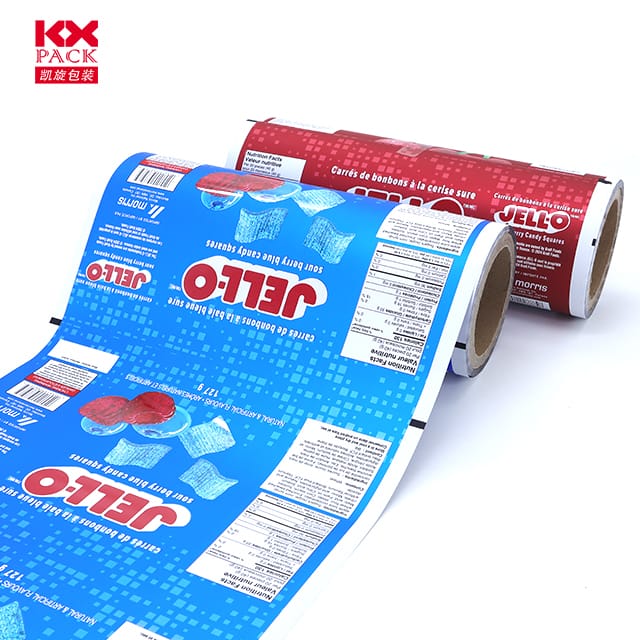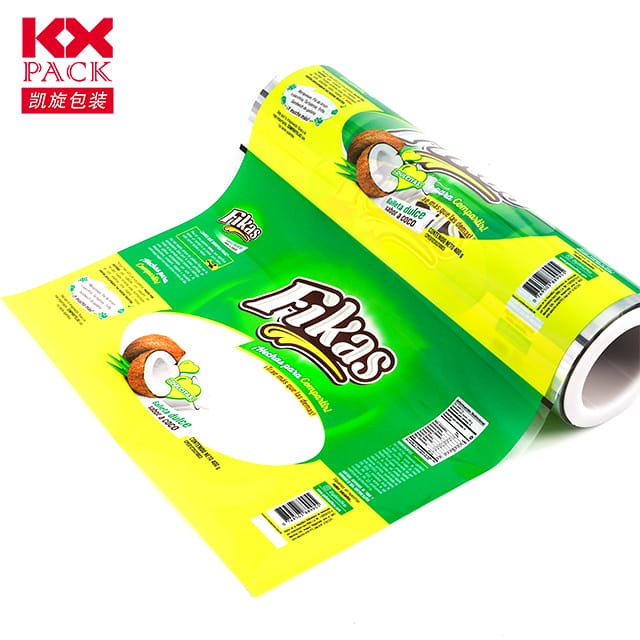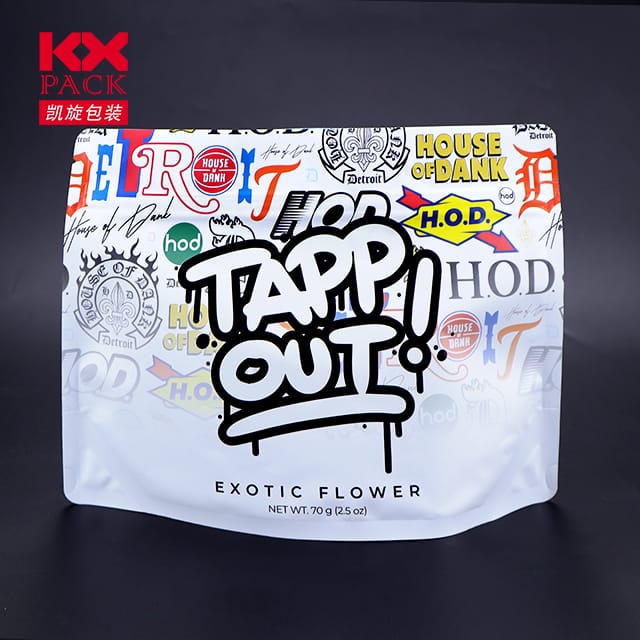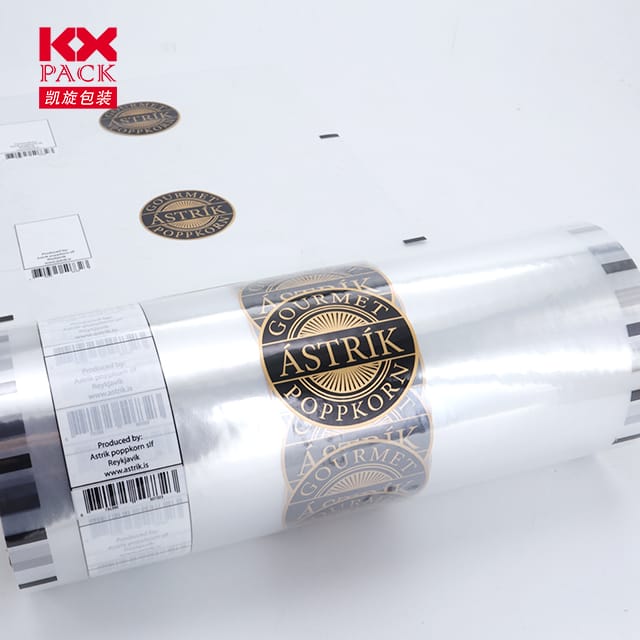Οι περιπλοκές της κατασκευής ταινιών συσκευασίας: Εξερεύνηση με γνώμονα τη διαδικασία (3)
Φιλμ συσκευασίας
Στη σφαίρα της σύγχρονης συσκευασίας, Η κατασκευή ταινιών συσκευασίας αποτελεί ακρογωνιαίο λίθο της καινοτομίας και της αποτελεσματικότητας. Από την ασφάλεια των τροφίμων έως τη συντήρηση των προϊόντων, Η ποιότητα και η λειτουργικότητα των ταινιών συσκευασίας επηρεάζουν άμεσα την εμπιστοσύνη των καταναλωτών και τη φήμη της μάρκας. Αυτό το ιστολόγιο βυθίζεται στοΔιαδικασία κατασκευής ταινιών συσκευασίας, επισημαίνοντας τα βασικά στάδια, τεχνολογικές εξελίξεις, και μέτρα ελέγχου ποιότητας που καθορίζουν αυτήν τη δυναμική βιομηχανία.
1. Επιλογή και προετοιμασία υλικού
Το ταξίδι ξεκινά μεεπιλογή πρώτων υλών, Ένα κρίσιμο βήμα που καθορίζει τις φυσικές ιδιότητες της ταινίας και την καταλληλότητα της εφαρμογής. Πολυαιθυλένιο (Π.Ε), συμπεριλαμβανομένης της υψηλής πυκνότητας (HDPE) και χαμηλή πυκνότητα (LDPE), παραμένει βασικό λόγω της ευελιξίας του, αποδοτικότητα κόστους, και ανακυκλώσιμο. Οι προχωρημένες συνθέσεις μπορούν να ενσωματωθούνοξικό αιθυλεν-βινυλίου (ΕβΑ) συμπολυμερή ήτεχνικές συν-εξαίρεσης πολλαπλών στρώσεων για την ενίσχυση των ιδιοτήτων φραγμού, Τεντωτό, ή αντίσταση θερμότητας. Για παράδειγμα, Οι μεμβράνες που βασίζονται σε EVA με περιεκτικότητα σε οξικό βινύλιο 9-26% είναι κατασκευασμένες για συσκευασία κενού, προσφέροντας υψηλές αναλογίες τεντώματος χωρίς να διακυβεύεται η ακεραιότητα.
2. Εξώθηση και σχηματισμός φιλμ
Η καρδιά της διαδικασίας βρίσκεταιεξώθηση, Όπου τα σφαιρίδια ρητίνης λιώνονται και αναγκάζονται μέσω μήτρας για να σχηματίσουν μια συνεχής μεμβράνη. Οι σύγχρονες γραμμές εξώθησης χρησιμοποιούνσυν-εξαίρεση τεχνολογία, επιτρέποντας την ταυτόχρονη δημιουργία ταινιών πολλαπλών στρωμάτων με ξεχωριστές λειτουργίες-π.χ., Ένα στρώμα φραγμού για αντίσταση οξυγόνου και στρώμα στεγανοποίησης για σφράγιση θερμότητας. Βασικές παράμετροι όπωςθερμοκρασία, πίεση, και βιδωτή ταχύτητα ελέγχονται σχολαστικά για να εξασφαλίσουν ομοιόμορφο πάχος και μοριακό προσανατολισμό.
3. Εκτύπωση και ενίσχυση της επιφάνειας
Η αισθητική και η επωνυμία μπαίνουν στο παιχνίδι κατά τη διάρκειαεκτύπωση, Όπου τεχνικές όπωςΕυελιογραφία (για υψηλή ταχύτητα, πολύχρωμες θέσεις εργασίας) ήΕκτύπωση υπεριώδους (για ζωντανό, Γραφικά άμεσης ξήρανσης) προσθέστε οπτική έκκληση. Εκτύπωση υπεριώδους, προπαντός, προσφορές1440 ακρίβεια DPI και 5ετή αντίσταση εξασθένισης, καθιστώντας το ιδανικό για πολυτελή συσκευασία. Μετά την εκτύπωση, θεραπείες επιφάνειας όπωςλεπτό έλασμα, ανάγλυφος, ή μεταλλοποίηση Βελτιώστε την ανθεκτικότητα, απτική έφεση, ή ιδιότητες φραγμού.
4. Πλαστικοποίηση και σύνθετη σύνδεση
Για δομές πολλαπλών στρώσεων, λεπτό έλασμα Συντήρηση διαφορετικών ταινιών ή υποστρωμάτων (Π.χ., χαρτί, αλουμινόχαρτο) Χρησιμοποιώντας συγκολλητικές ουσίες ή θερμική σύνδεση.Ξηρή πλαστικοποίηση Χρησιμοποιεί θερμότητα και πίεση, ενώυγρή πλαστικοποίηση χρησιμοποιεί συγκολλητικά με βάση τον διαλύτες. ΕΝΑ 2021 Η μελέτη υπογράμμισε την πρόκληση τουπτητική οργανική ένωση (Πτητόρος) μετανάστευση σε συγκολλητικά που βασίζονται σε διαλύτες, Προτρέποντας τους κατασκευαστές να υιοθετήσουνπαρακολούθηση VOC σε επεξεργασία με φορητούς αισθητήρες. Αυτό εξασφαλίζει τη συμμόρφωση με τους κανονισμούς για την ασφάλεια των τροφίμων και μειώνει τις περιβαλλοντικές επιπτώσεις.
5. Σχίζων, Κούρδισμα, και φινίρισμα
Η τελική ταινία είναισχισμή σε επιθυμητά πλάτη καιπληγή σε ρολά ή καρούλια. Τα αυτοματοποιημένα συστήματα προσαρμόζουν την τάση και την ταχύτητα για να αποφευχθούν ελαττώματα όπωςτηλεσκοπικός ήτσαλακωμένο. Οι ποιοτικοί έλεγχοι σε αυτό το στάδιο περιλαμβάνουνμέτρηση πάχους, δοκιμή αντοχής εφελκυσμού, και οπτική επιθεώρηση για την ανίχνευση οπών ή ασυνέπειων.
6. Έλεγχος ποιότητας και καινοτομία
Βιομηχανία 4.0 Οι τεχνολογίες μετασχηματίζουν τον ποιοτικό έλεγχο.Αισθητήρες IoT Ενσωματωμένο σε μηχανήματα παρακολουθεί δεδομένα σε πραγματικό χρόνο σχετικά με τη θερμοκρασία, πίεση, και ταχύτητα γραμμής, επιτρέποντας τη συντήρηση της πρόβλεψης και τη μείωση των ελαττωμάτων. Για παράδειγμα, ένα 2025 Η μελέτη κατέδειξε τον τρόπο με τον οποίο η ανάλυση του IoT με πέντε παραμέτρους μείωσε τα ελαττώματα ποιότητας στην παραγωγή φιλμ συσκευασίας από 30%. Επιπλέον, πρωτοβουλίες βιωσιμότητας οδηγήστε την υιοθέτηση τουβιοαποικοδομήσιμα πολυμερή καιανακυκλωμένο περιεχόμενο, ευθυγράμμιση με παγκόσμιες οικολογικές συνειδητικές τάσεις.
συμπέρασμα: Το μέλλον της κατασκευής ταινιών συσκευασίας
Η βιομηχανία ταινιών συσκευασίας είναι έτοιμη για ανάπτυξη, οδηγείται απόαυτοματοποίηση, βιότης, και τη ζήτηση των καταναλωτών για συσκευασία υψηλής απόδοσης. Ως τεχνολογίες όπωςΑνίχνευση ελαττωμάτων με γνώμονα AI καιφραγμοί νανο-στρώμα αναδύομαι, Οι κατασκευαστές πρέπει να εξισορροπούν την καινοτομία με τη συμμόρφωση με την κανονιστική συμμόρφωση και την περιβαλλοντική διαχείριση. Με την κυριαρχία της διαδικασίας παραγωγής - από την επιλογή υλικού έως τις τελικές επιθεωρήσεις - οι συνθέσεις μπορούν να παραδώσουν ταινίες που όχι μόνο προστατεύουν τα προϊόντα αλλά και ανυψώνουν τα εμπορικά σήματα σε μια ανταγωνιστική αγορά.
Μείνετε συντονισμένοι για περισσότερες πληροφορίες σχετικά με τις καινοτομίες συσκευασίας και τις τάσεις της βιομηχανίας! 🌍📦✨
Λέξεις -κλειδιά: Κατασκευή ταινιών συσκευασίας, Εξώθηση, Εκτύπωση, Λεπτό έλασμα, Ποιοτικός έλεγχος, Βιότης, Θόρυβος, Εκτύπωση υπεριώδους






